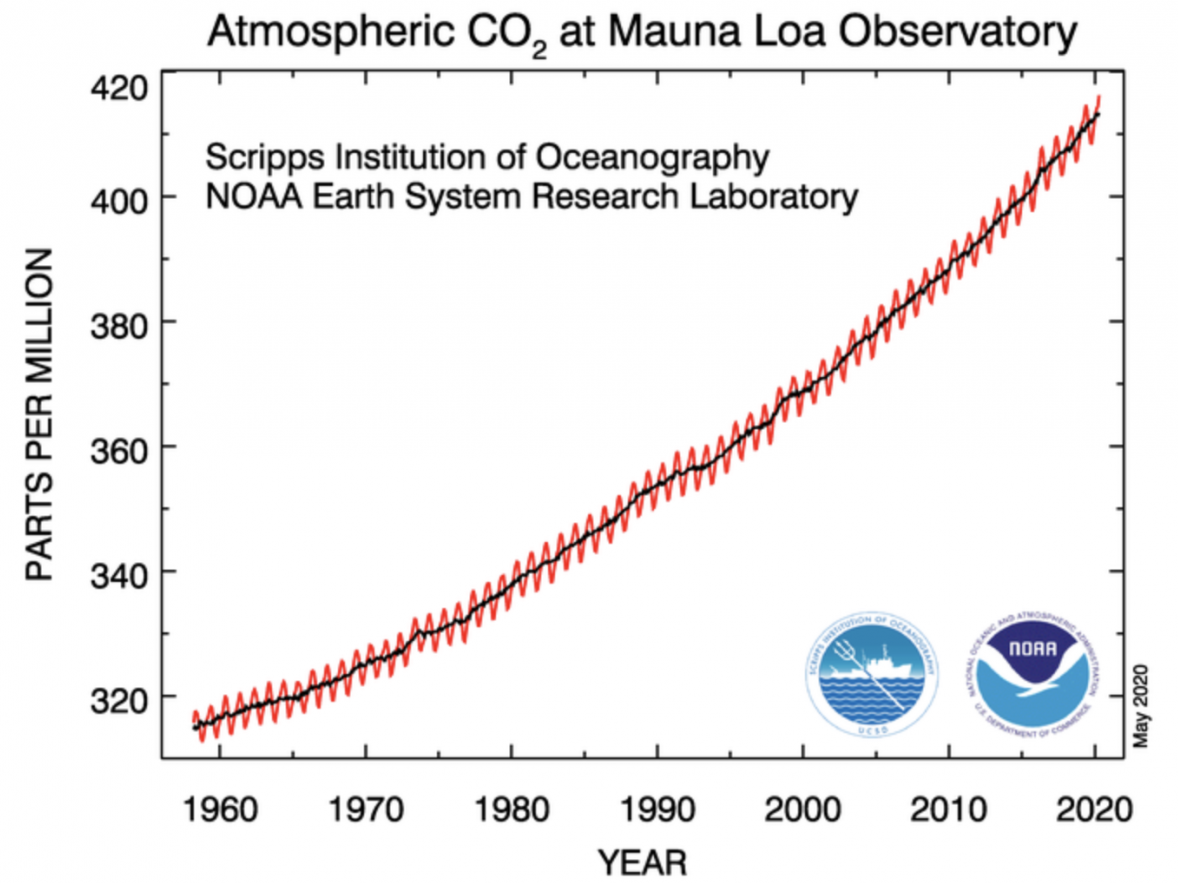Global carbon dioxide levels at record high despite coronavirus lockdown
CO2 emissions are not only increasing but also accelerating, according to climate scientists
Your support helps us to tell the story
From reproductive rights to climate change to Big Tech, The Independent is on the ground when the story is developing. Whether it's investigating the financials of Elon Musk's pro-Trump PAC or producing our latest documentary, 'The A Word', which shines a light on the American women fighting for reproductive rights, we know how important it is to parse out the facts from the messaging.
At such a critical moment in US history, we need reporters on the ground. Your donation allows us to keep sending journalists to speak to both sides of the story.
The Independent is trusted by Americans across the entire political spectrum. And unlike many other quality news outlets, we choose not to lock Americans out of our reporting and analysis with paywalls. We believe quality journalism should be available to everyone, paid for by those who can afford it.
Your support makes all the difference.Global carbon dioxide levels have hit a record high despite reports of localised improvements in air quality due to the coronavirus lockdown, according to reports.
The National Oceanic and Atmospheric Association (NOAA) released data last week showing that CO2 levels have risen steeply.
According to the US agency the monthly average CO2 concentrations, recorded at the Mauna Loa Observatory in Hawaii, were 416.21 parts per million (ppm) this year compared to 413.33ppm in April 2019. It's the highest concentration since records began in 1958.
CO2 concentrations a decade ago were 393.18ppm, NOAA reported.
Not only are CO2 concentrations increasing but they are also accelerating, according to the data. During the 1960s, the increase over one year was an average of 0.9ppm which has risen to an average 2.4ppm a year in the past decade.
NOAA says it is "confident" that the CO2 measurements "reflect the truth about our global atmosphere". The observatory is located at an altitude of 3400m, near the summit of the Mauna Loa volcano, which allows air masses to be measured that represent large areas.
During the pandemic, satellite data had shown reductions in nitrogen dioxide levels over urban areas in China, Europe and the US but overall, global emissions are climbing.

Climate scientists indicated that the coronavirus pandemic could lead to a drop in emissions but that without structural change, they would be short-lived and have little impact on the build-up of CO2 in the atmosphere that has taken place over decades.
Rob Jackson, head of the Global Carbon Project, told Reuters that although greenhouse gas emissions dipped in the wake of the 2008 global financial crisis, they rebounded during economic recovery and increased 5.1%.
A United Nations report last year said that emissions would have to start falling by an average of 7.6% per year to achieve the 1.5C temperature goal set out by the Paris Climate Accords. Going beyond this target will lead to increasingly severe climate impacts, the Intergovernmental Panel on Climate Change (IPCC) has warned.
The United Nations Environment Program (UNEP) reported that while the pandemic had led to a reduction in air and road travel along with industrial activity since the beginning of the year, electricity use has not dropped. Nearly two-thirds of global electricity energy is made up from fossil fuels with coal being the main source.
UNEP also noted that additional CO2 was being added to the atmosphere from large forest fires which are expected to increase in severity due to climate change.
Last week, some 2,500 acres in the Florida panhandle were ablaze due to high winds and dry conditions. NASA's Earth Observatory also showed forest fires raging in large regions of countries including Brazil, Honduras, Venezuela, Thailand and Myanmar.

Join our commenting forum
Join thought-provoking conversations, follow other Independent readers and see their replies
Comments